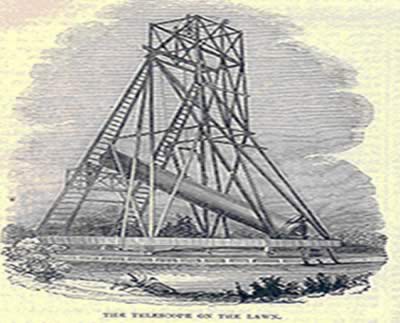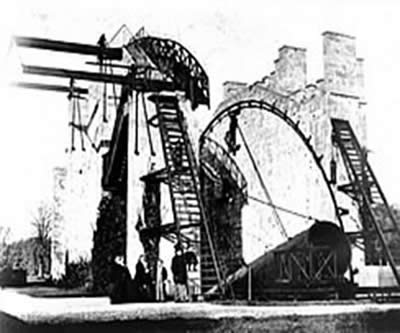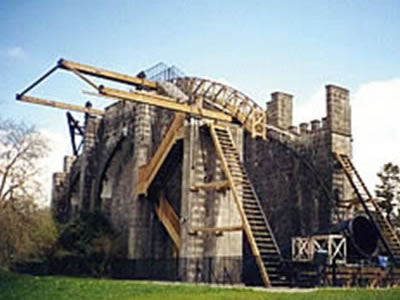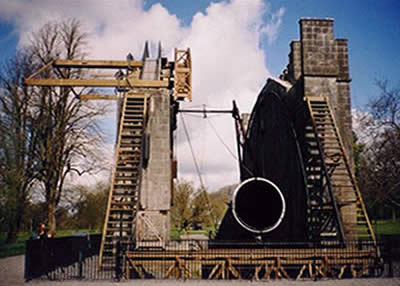|
Introduction
Welcome to this December issue of “Daltons
in History” and our thoughts immediately turn to the festive
season which is nearly upon us. So I start by extending greetings to
all our readers, be they DGS members or part of that much wider circle
of those interested in Dalton family history, who visit this site regularly.
I wish each and every one of you, and your families, a truly Happy Christmas
and a peaceful and rewarding New Year.
With this issue of “Daltons in History”,
Volume 10 Number 12, we complete ten years of bringing you this monthly
newsletter on the web. This is a considerable milestone and I want to
pay tribute to Millicent Craig, who had the vision ten years ago to
start it. The very first issue appeared in January 1998 and it has appeared
without fail every month since then. We salute you Millicent, and thank
you for your dedication to the work of the DGS over many years.
2008 Gathering in Ireland
Friday 1st to Monday 4th August 2008 are the dates
when our 2008 Gathering will take place in Birr, Co Offaly, Ireland.
This is a double event – it is an Annual Gathering of the Dalton
Genealogical Society and it is also the first official Gathering of
Clan Dalton. Dooly’s Hotel is the venue, with its excellent conference
facilities for our meetings and the annual dinner. Delegates will be
able to stay at Dooly’s and we have also arranged additional accommodation
at three nearby places offering bed and breakfast. Birr is located in
the heart of mid-Ireland about two hours drive west of Dublin, and a
similar distance east of Shannon. It is a beautiful old Georgian town
with an impressive castle and much of interest to the visitor. It is
also well situated to enable us to make a number of visits to places
with Dalton connections. Further details will be found by clicking on
the “Forthcoming Gatherings” link on this website.
Since the initial details were posted here two months
ago, considerable interest has been shown in this event and the accommodation
in Dooly’s Hotel is almost full. Again, if you have not already
done so, you are urged to contact myself (email: michaelndalton@aol.com),
and our Irish Secretary and Clan Dalton Chieftain, Ciaran Dalton (ciaran_dalton@hotmail.com)
at the earliest opportunity to register your interest in attending. The
full programme for the weekend and the official registration form are
due to be published on the website soon, and they are also being distributed
to all DGS members with Volume 47 of the DGS Journal, due to appear at
the end of the year.
If, in the meantime, you have any questions about our
plans for the event or need help with making your travel arrangements,
please contact either Ciaran or myself.
2008 Annual General Meeting
As already announced, the Society’s 2008 Annual
General Meeting is to be a separate event from the Birr Gathering, and
it will take place on Saturday 7th June 2008 at the
Royal Logistics Corps Museum in Camberley, Surrey, England. This venue
has been chosen to give the opportunity to view the original of the
Victoria Cross medal awarded in 1879 to James Langley Dalton for his
gallantry at Rorke’s Drift in the Zulu War. DGS committee member,
Sir Geoffrey Dalton and I have recently visited the museum to finalise
the arrangements. The day will commence at 11.00 am with a tour of the
medal collection, including the James Langley Dalton VC, hosted by Colonel
Owen. This will be followed by a buffet lunch, after which we will have
our DGS AGM. Those attending will then be free to tour the Museum which
contains many interesting displays. The full programme for the day together
with a booking form will be posted on the “Forthcoming Gatherings”
section of this website soon, and they are also being distributed to
all DGS members with Volume 47 of the DGS Journal, due to appear at
the end of the year.
The Dalton International DNA Project (DIDP)
Chris Pomery, the consultant to DIDP, gave the Society
a most encouraging presentation on the project at the Worcester Gathering
at the end of July. He has now prepared Issue 2 of the DIDP Progress
Report (for 2007) and this is still being proof read, checked and finalised
prior to its distribution to all project participants. The 42 page document
is a state of the art analysis of the DNA results of 98 testees. This
includes some testees in the Dalton America Project whose DNA results
match testees in DIDP. Further additional information has become available
for incorporation into the report and we are now very close to finalising
and distributing it.
Subscriptions to the Dalton Genealogical Society
Members of the Society should note that approval was
given at the AGM to an increase in the UK subscription rate to £10.00
per annum with effect from 1 January 2008. The subscription rate has
been held at £8.00 since 1991, a period of 17 years, and the committee
believes that the Society, with all the benefits that are available
to members, still offers exceptional value for money at the new rate.
Revised rates for overseas members have been set as follows:
For members in the United States and Canada who remit
their subscription to the American Secretary, Millicent Craig US$24.00
For members in Australia and New Zealand who remit
their subscription to the Australian Secretary, Maureen Collins A$27.00
We are also investigating opening a euro account, which
will enable us to accept payments in euros, and hope to announce a euro
subscription rate soon.
These rates take account of the prevailing exchange
rates and the costs of airmail postage for the DGS Journal.
Back issues of the DGS Journal
Back issues of the DGS Journal continue to be available.
On this website you can access the DGS Journal Index from the homepage.
Here you will find a synopsis of the contents of the Journal of the Dalton
Genealogical Society commencing with Volume 1 published back in 1970 through
to Volume 41 published in December 2004. Shortly we will be adding the
synopses for Volumes 42 to 46. Copies of all back numbers are available
for purchase and these can be obtained from DGS member, Mrs Pat Robinson
(address: Mallards, 3 High Street, The Green, Barrington, Cambridge CB2
5QX, UK email: gandprobinson@waitrose.com.
Details of prices, including postage and packing, will be found with the
index.
Conclusion
Enjoy this month’s issue of “Daltons
in History”, your regular monthly update on everything that
is happening in the world of Dalton family history. We will be back
again in the New Year.
Thank you for your attention and best wishes to you
all.
Yours very sincerely
Michael Neale Dalton
Chairman and Honorary Life President of the Dalton Genealogical Society
|



